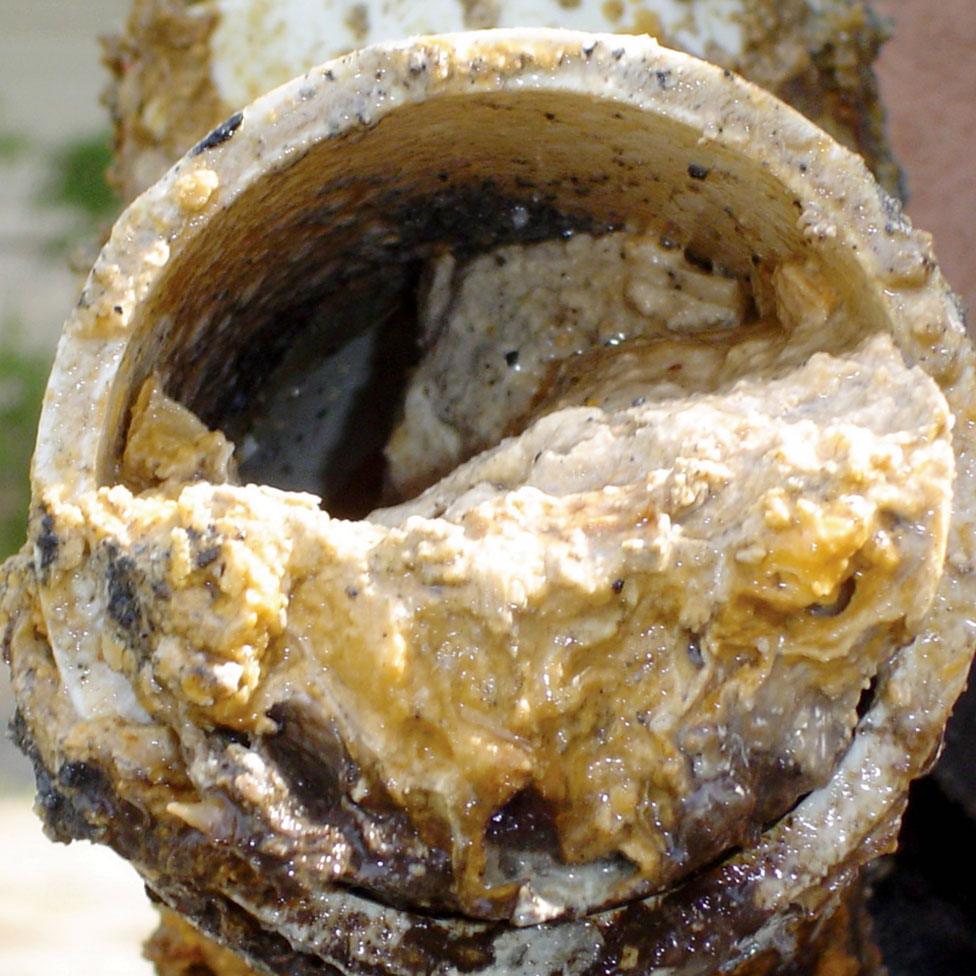'Monster' fatberg to go on display in museum
- Published

The museum will show how fat is blocking London's Victorian infrastructure
Part of one of the capital's biggest fatbergs is going to be put on display in the Museum of London next year.
It is a slice of a monster fatberg, over 250m (820ft) long, which had been clogging up sewers below Whitechapel.
The museum says it was a congealed concoction of "fat, oil, grease, wet wipes and sanitary products".
The display will show how modern living and high levels of rubbish are putting pressure on the "arteries" of London's Victorian infrastructure.
The Whitechapel fatberg became something of a celebrity in its own right last autumn - with Thames Water fighting a nine-week battle against a "rock hard" blockage weighing 130 tonnes.
Part of the fatberg was filmed by Thames Water engineers trying to remove the blockage
The museum describes the fatberg's dimensions as being longer than Tower Bridge and as heavy as 11 double-decker buses.
Curator Vyki Sparkes said it "will be one of the most fascinating and disgusting objects we have ever had on display".
Thames Water's Stuart White says that part of its fascination is that it is the product of our own modern-day living, describing it as "repulsively human".
There is an eco-friendly ending to what happened to the rest of the fatberg.
It was chopped up and mostly converted into bio-diesel.
Reality check: What is a fatberg?
Despite the name, fatbergs are actually mainly made up of wet wipes. They account for a startling 93% of the material blocking our sewers according to Water UK, the membership body for water providers.
They collected samples to analyse from blockages in sewers, pumps and wastewater treatment works.
Wet wipes - mostly baby wipes, but also those used to remove make up and clean surfaces - made up the vast majority of the material.
Fat, oil and grease only made up 0.5%.
The other 7% was made up of a range of other materials including feminine hygiene products, cotton pads and plastic wrappers.
Toilet paper made up just 0.01% of the material blocking our pipes and sewers.
Environmental charities including Greenpeace and the Marine Conservation Society say they are not surprised by this high number since wet wipes are often marketed as "flushable".